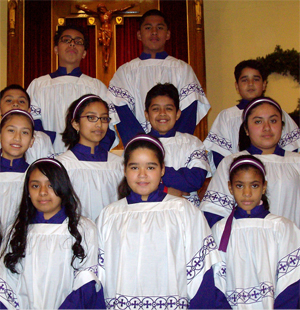
|
|
Biggest challenge:
Weekly attendance at Eucharist
|
Active Programs

Renewing Parish Culture Book Review
The Catholic Education Institute
is committed to working with parishes and their pastors and staffs in the
on-going process of renewal and reinvigoration. Our approach to that work is explored in depth in the book: Renewing
Parish Culture: Building for a Catholic Future, Rowman
& Littlefield Publishers, 2008 ISBN-13: 978-0-7425-5904-2; ISBN-10:
0-7425-5904-1.
The following two reviews capture the essence and spirit of
the book:
Reviewed by Lawrence Cunningham,
Commonweal Magazine, September 21,
2009.
John
J. Piderit, SJ, and Melanie M. Morey are the authors of the much-discussed
{Catholic Higher Education: A Culture in Crisis} (Oxford University Press,
2006), which triggered many debates on the “Catholic character” of Catholic
colleges and universities. The same authors have now teamed up again to write
about the state of Catholic parishes in the United States.
In
their preface, they write that while parishes are at the heart of the American
church, the story of the American parish is today a “complicated
narrative”--and not an entirely reassuring one. Most Catholics would probably
say “amen” to that. Every day comes news of parishes being closed or
consolidated, of priest shortages, of fewer Catholics attending Mass regularly,
of Catholics for whom parish life is a mere memory.
But,
as its title suggests, {Renewing Parish Culture} is less concerned with
rehearsing the problems of parish life today than with focusing on ways to
reinvigorate parishes. The authors' ideas are modeled on the success of the
religious sisters who were so vital to parish life and other ministries a few
generations ago. Piderit and Morey are not trying to duplicate a previous era
in the church, but they do want to discover why religious sisters were so
effective. Their conclusion: religious women in a variety of ministries “gave
Christian witness, executed well, made deft dynamic adjustments, recruited
effectively, exercised financial realism, and promoted growth and competition.”
The
challenge is to transfer these virtues and methods to the parish. The authors
divide the rest of the book into two large sections: one devoted only to
parishes, the other to both the parish and the diocese. In the first section
the authors write about how to develop a robust liturgical life, about the
structure of religious education for both children and adults, and about ways
to enhance service (diakonia--hence our word “deacon”). In the second section
they highlight such familiar and vexatious topics as priest shortages and the
development of lay leaders, as well as the ever-looming problem of church
finances.
It
is hard for me to judge whether their recommendations are practical, or even
possible, since my own perspective is from the pew, but it does seem to me that
this book would be an excellent point of departure for discussions at both the
parochial and the diocesan levels. Informed by a sophisticated social theory
and theology, {Renewing Parish Culture} arrives at some very concrete
proposals. It is designed not only to be read and discussed but also to be
used.
Reviewed by Audra Kunciunas,
Australian Catholic Bishops Conference, Pastoral Projects Office, Australian
Catholic University, Fitzroy, 3065, Victoria, Australia
Some
suburban Catholic parishes in the United States are flourishing, especially in
the more economically healthy areas. (It will be interesting to see the effect
of the current economic crisis on these parishes.) However, it is not news that
overall there is a decline in Catholic parish viability—studies show that fewer
than 35 per cent of Catholics report they attend Mass two or more times per
month. As in a number of other western cultures, regular Mass attendance is no
longer the Catholic cultural norm. In Renewing Parish Culture, the
authors try to address this significant waning of parish life.
Piderit and Morey describe Catholic religious sisters as “the most effective
transmitters of Catholic culture in the United States.” The authors look at the
strategies used by these women to successfully cultivate and transmit Catholic
culture in specific institutional settings. They apply insights from the
cultural legacy of religious women’s congregations over the past two hundred
years to come up with new ways of nourishing parish life today. They also base
this study on extensive interviews conducted in forty parishes, mainly in the
New York City metropolitan area and some in Chicago.
Renewing Parish Culture Book Review Continued --->

